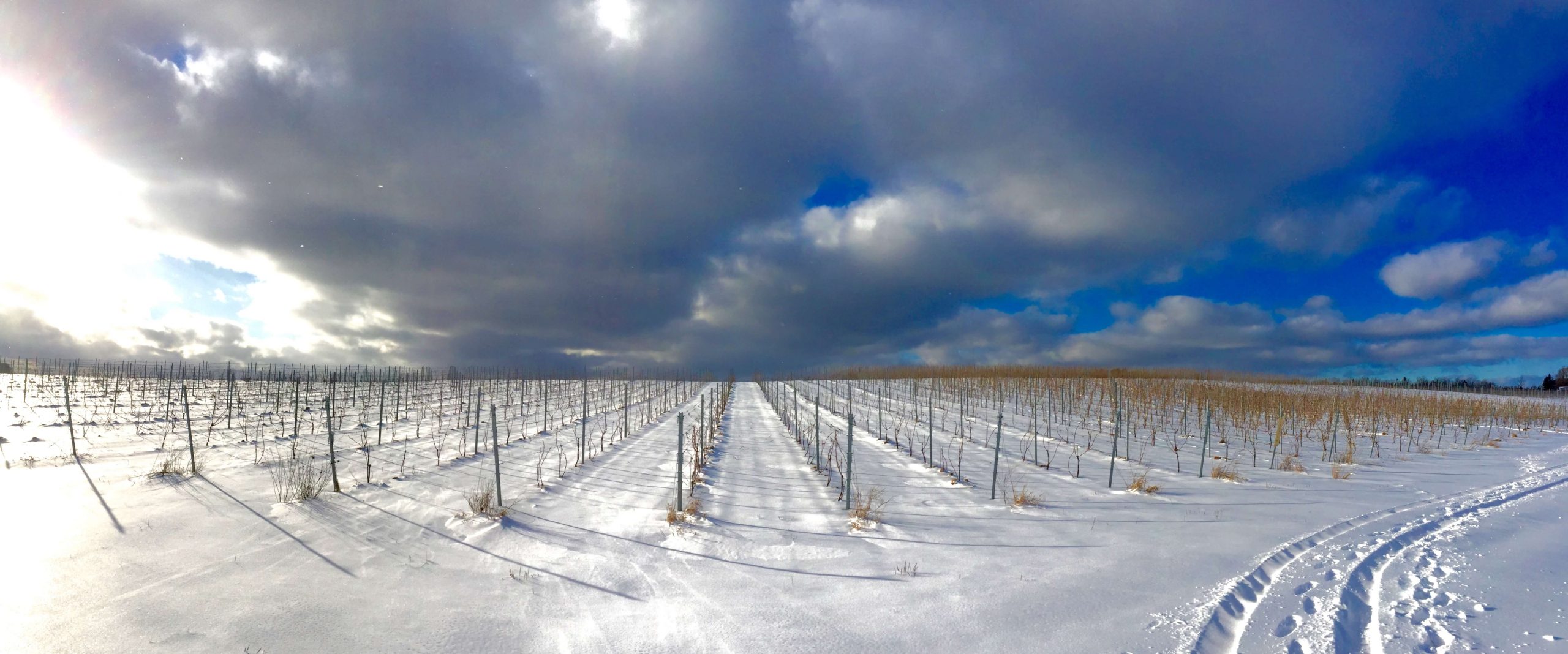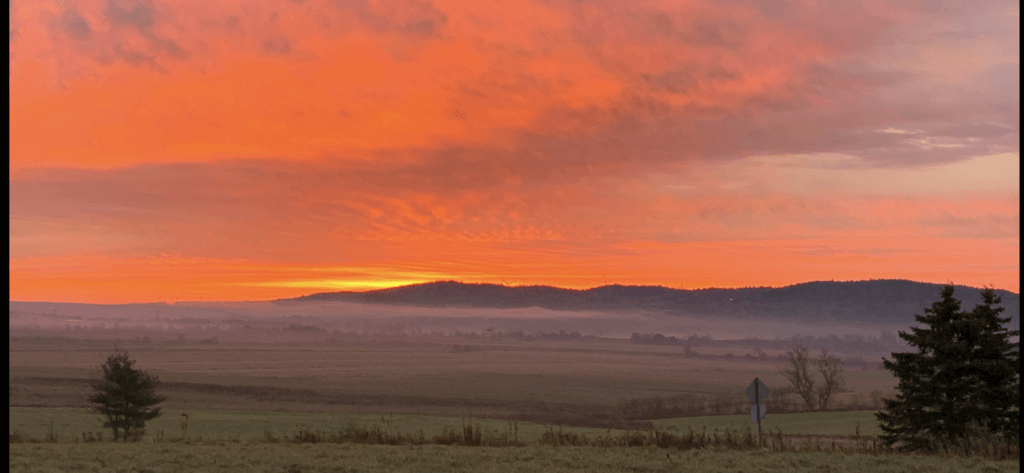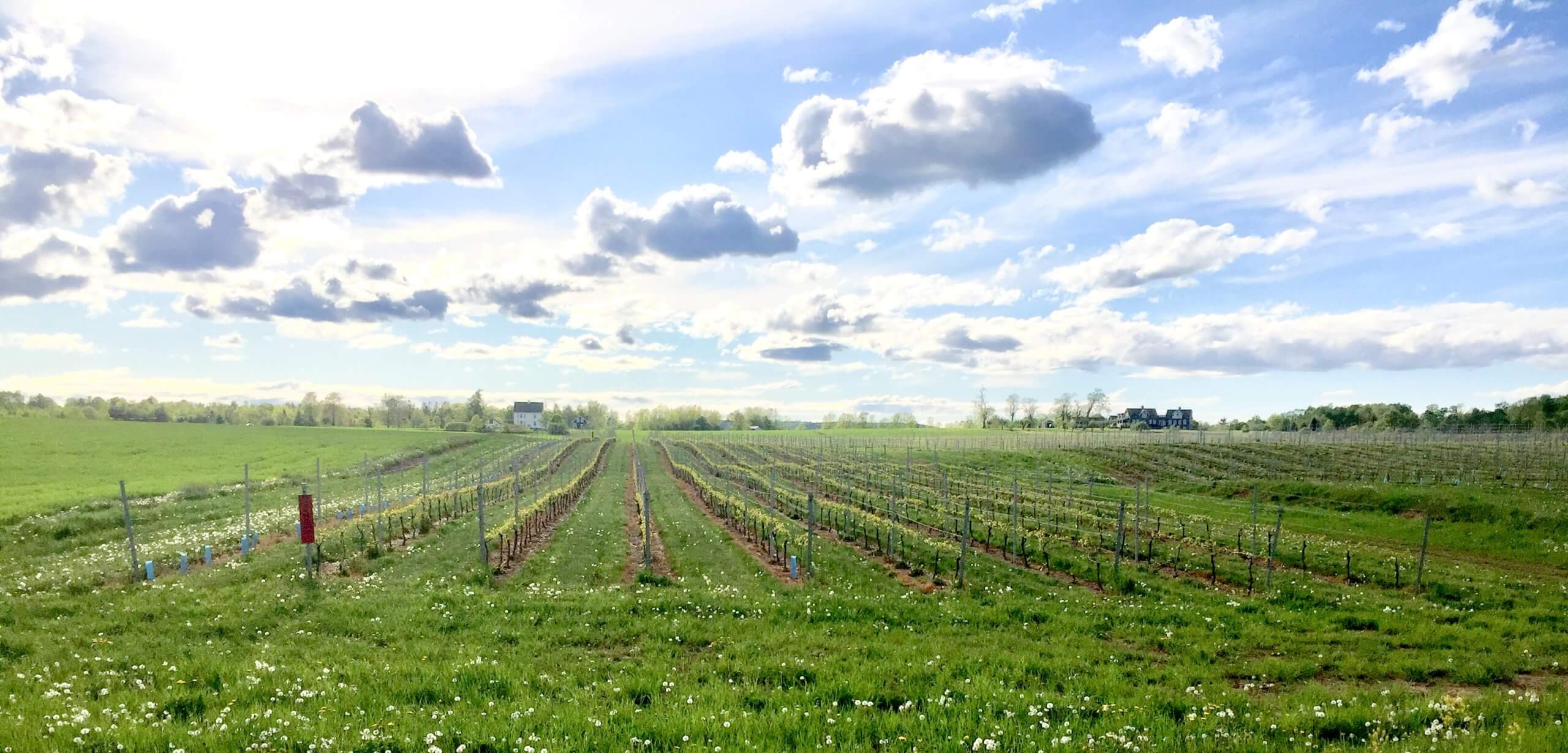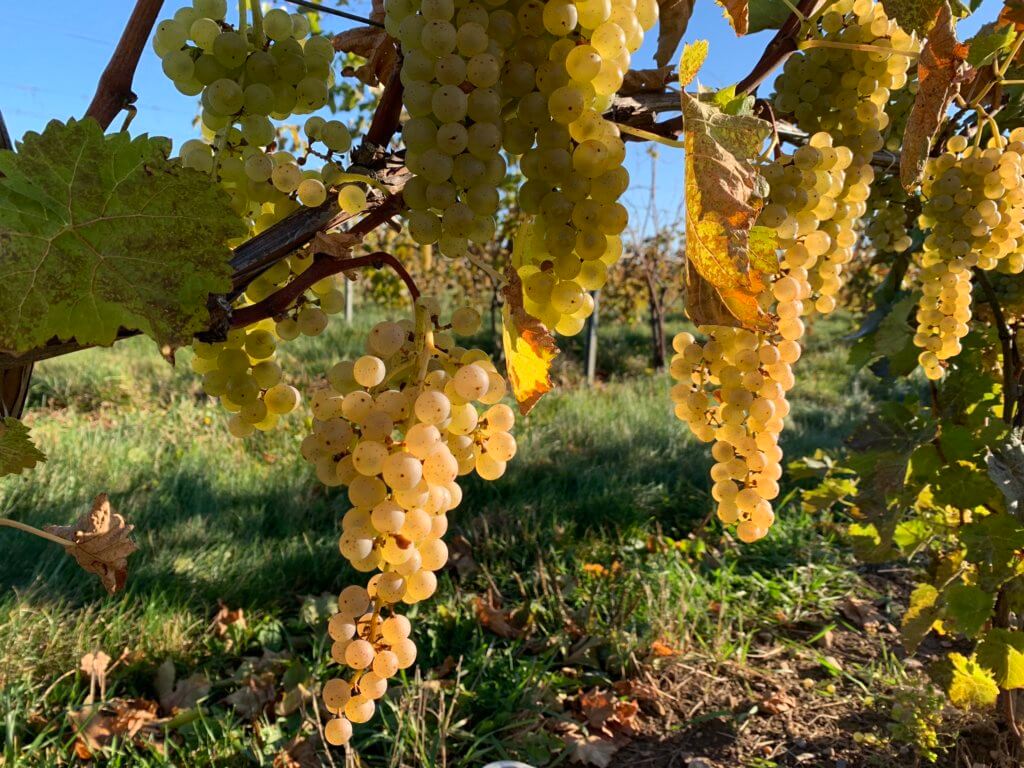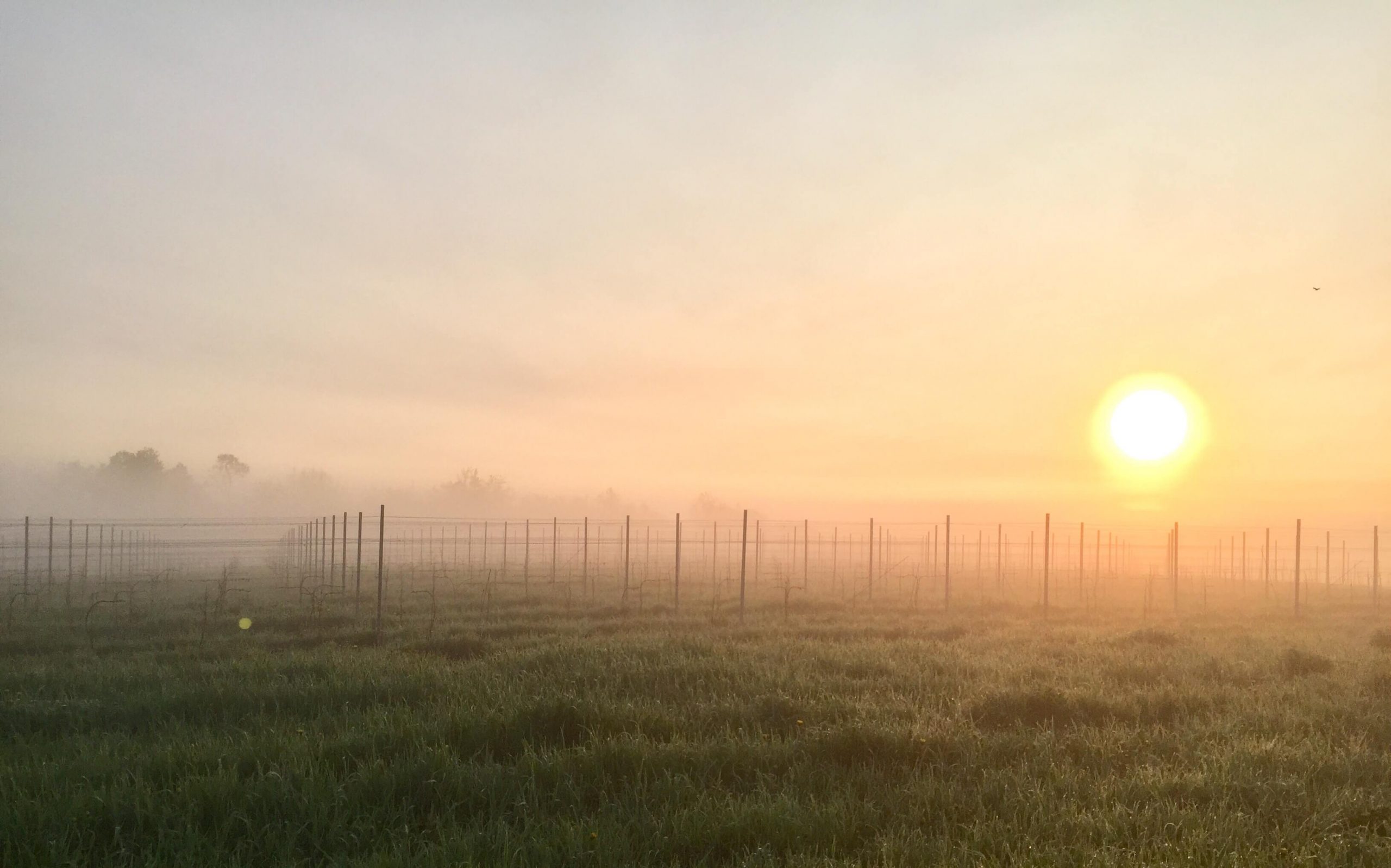Pruning after the devastating spring freeze of 2018
Johnston Vineyards lost 95% of its grape crop due to the spring freeze of 2018. The 3.5 tons of Petite Pearl and Vidal that was picked did not exceed 16 brix. All primary and secondary buds from the other varieties (Marquette, NY Muscat, Cabernet Foch, Riesling, Chardonnay and Seyval Blanc) were killed. Most 2 and 3 year old Cabernet Foch plants were killed. About 30% of the 2 year old Pinot Noir, 20% of the 2 year old Petite Milo and 15% of the 2 year old Geisenheim -318 were killed. Crown gall spread dramatically in the 4 year old Chardonnay and Riesling as a result of the freeze. The 2 year old Chardonnay (clone 548 on root stock 101-14) did the best (of the 2 year old plants) with survival of many original trunks and 5% plant loss rate. Surviving 2 year old plants lost a year of growth.
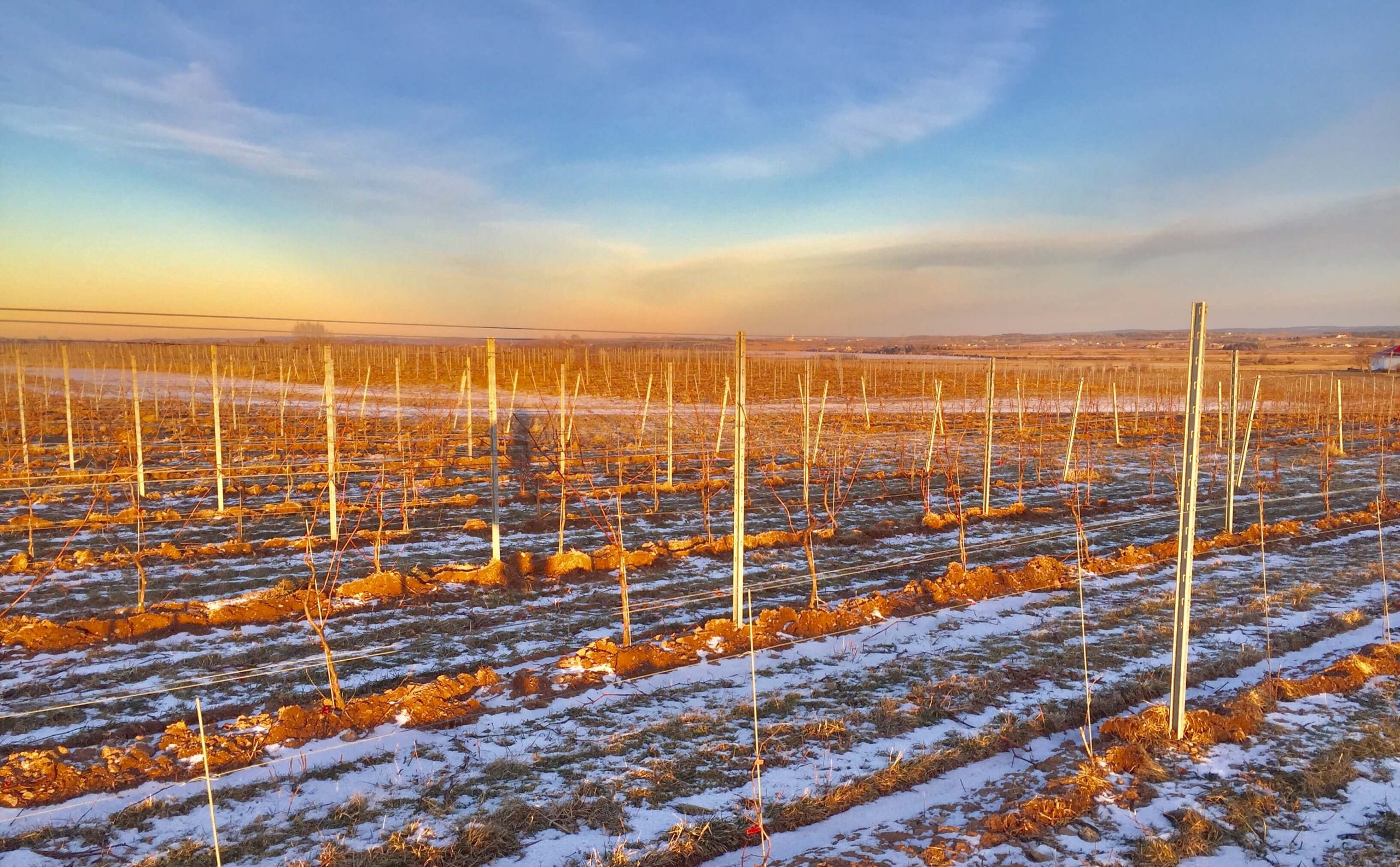
Winter conditions were excellent for pruning all winter. With only one full time employee it is important to have year round work available. The temperature didn’t go below -16 degrees C and there was little snow. This year vines will be chopped up with the bush hog mower except in the vinifera where it will be raked up and burned, this being an effort to limit crown gall spread to sensitive vinifera vines. Pruning was a challenge due to the freeze damage. There was a lack of adequate shoots for new fruiting canes. Following the freeze damage in the spring of 2018 it was elected to let the shoots develop on the fruiting cane even though there were few fruiting buds present. The idea was that any leaves would support growth of the plant’s root system. An alternative method would have been to cut the fruiting canes off to encourage growth of next years fruiting canes. Using the former method, Petite Pearl and Marquette produced the most new fruiting canes.
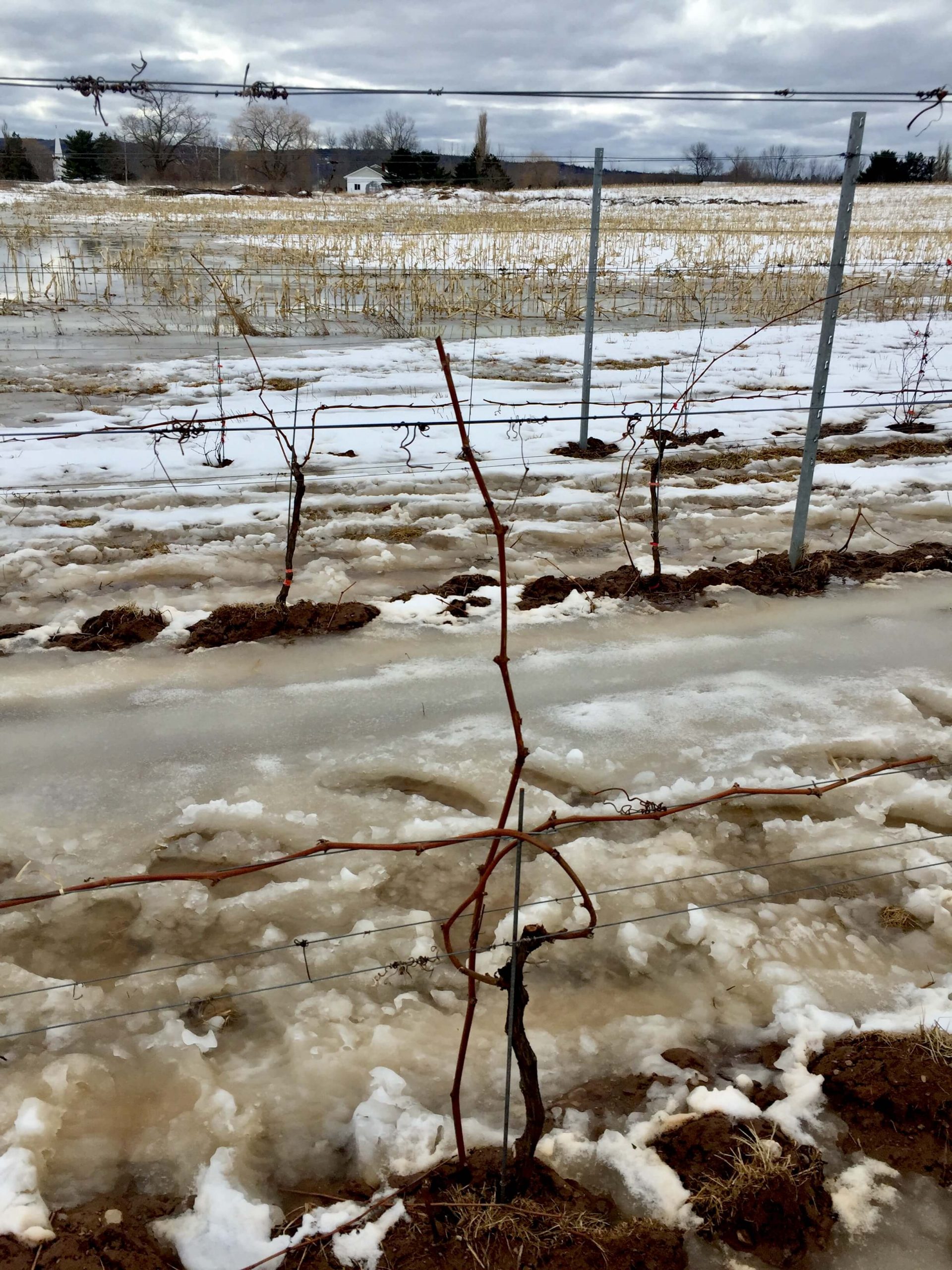
Tying down of new fruiting canes began in mid March when temperatures rose above freezing during the day. Canes are not pliable enough to bend onto the fruiting wires when the temperature is below freezing. Wet canes are even easier to bend. A “kicker” cane (an extra cane left to tie down in the event of bud damage due to a spring frost) was left for each trunk to serve as an insurance policy against frost or breakage. These will be added to the fruiting wire if the bud count is low at the time of bud break or cut off if bud count is adequate.
Thought was given to performing a formal microscopic assessment of new cane buds that will form clusters this spring. There is some concern that buds from shoots of freeze damaged vines will be less productive than those from vines that are not injured by cold. Another vineyard reported that buds assessed in such a fashion were less likely to produce clusters this spring. Since most of the buds studied at this vineyard were from suckers, it could reasonably be predetermined that bud productivity would be lower than that from a normal fruiting cane. As a result of this reasoning formal bud assessment was not done.
Fall hilling of vines to prevent winter graft damage
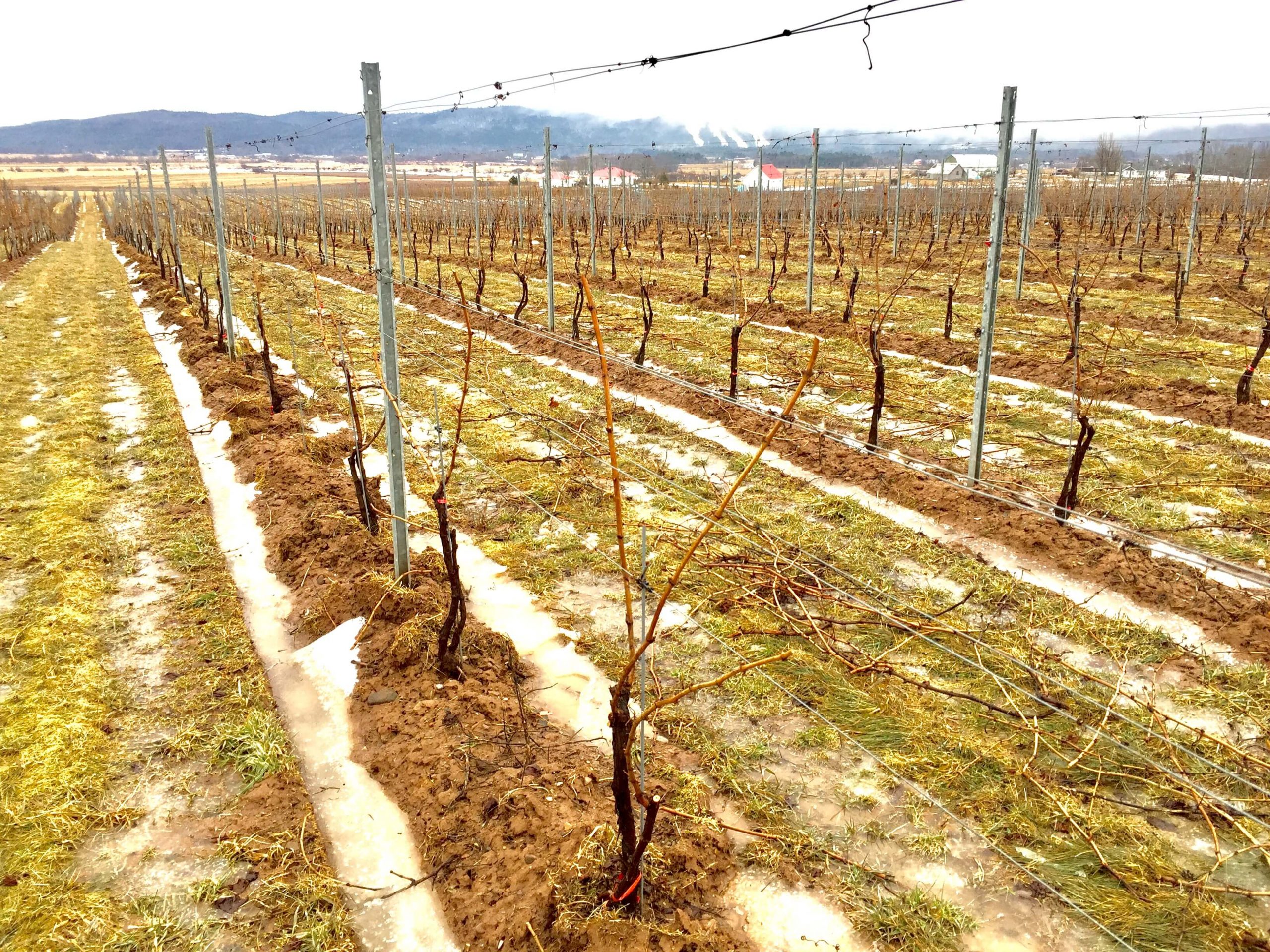
Serious thought will be given to not hilling up the vines this fall. Fairly significant erosion is noted each spring due to runoff of water (rain and melted snow) in the ditch left at each side of the vine row from hilling. The theory behind hilling up is that the soil pushed up around the graft site (especially the vinifera) protects the graft site from winter damage. My personal observation is that the graft is not consistently covered and if it is then rain and melting snow erode the soil leaving the graft exposed again, often early in the winter. It is an effective method of weeding but this can be done in the spring when the vineyard dries out.
Pre-pruning
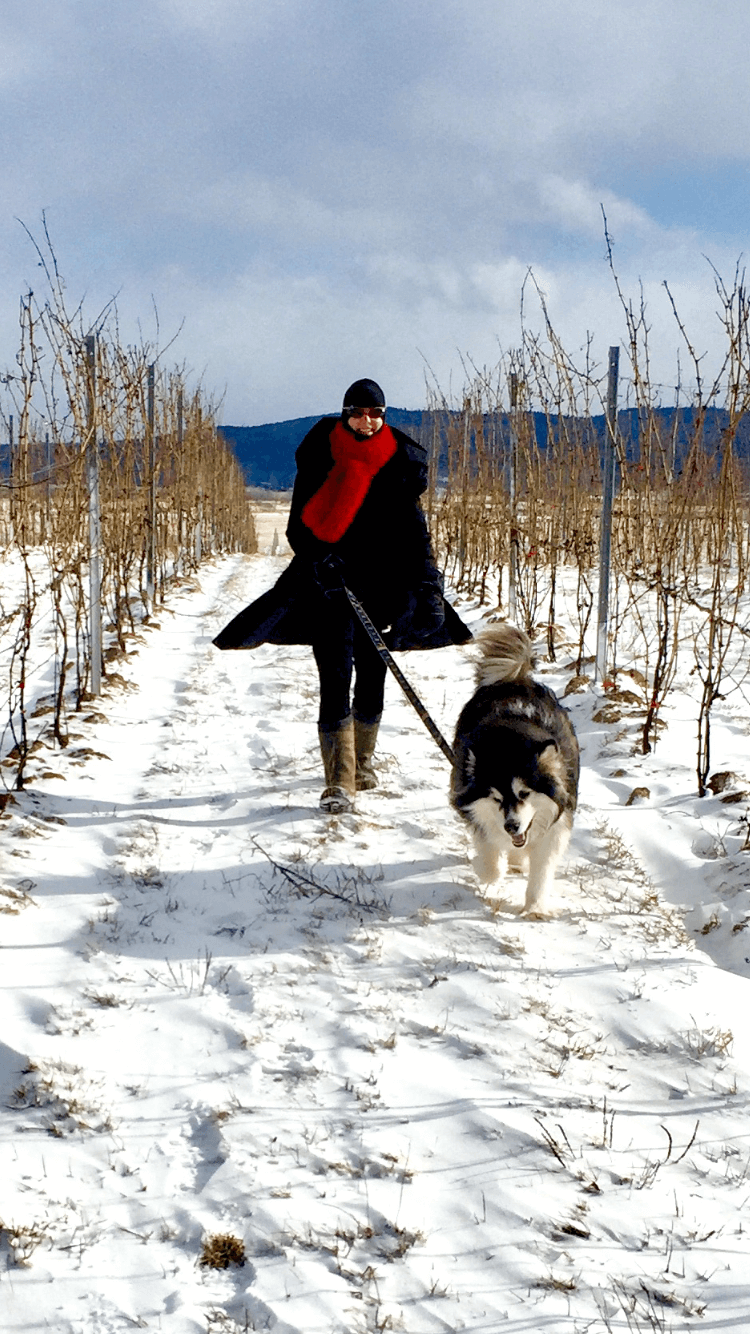
Pre-pruning with a mechanical pruner has become more popular in Nova Scotia. This equipment attaches to the front of the tractor and cuts the top part (the depth can be adjusted) of the canopy off. It backs off at each line post avoiding damage to the post and equipment. This makes it easier to pull the cut canes out of the trellis. It doesn’t make it easier to select the canes to prune. Cost is around 25000$. Ian Kaye (Vineyard Consulting and Services of Nova Scotia 902-740-2493) will provide this service. New Clemens equipment can be purchased from Klaus Sudbrack (shemogue.grape@gmail.com). Pre-pruning should be done fairly early in the winter before snow builds up in the vineyard. The hand pruning can be done later in the winter. At Johnston Vineyards the pruning is done first and the cut shoots are pulled out days or weeks later.
Winter is a good time to detect wet spots in the vineyard
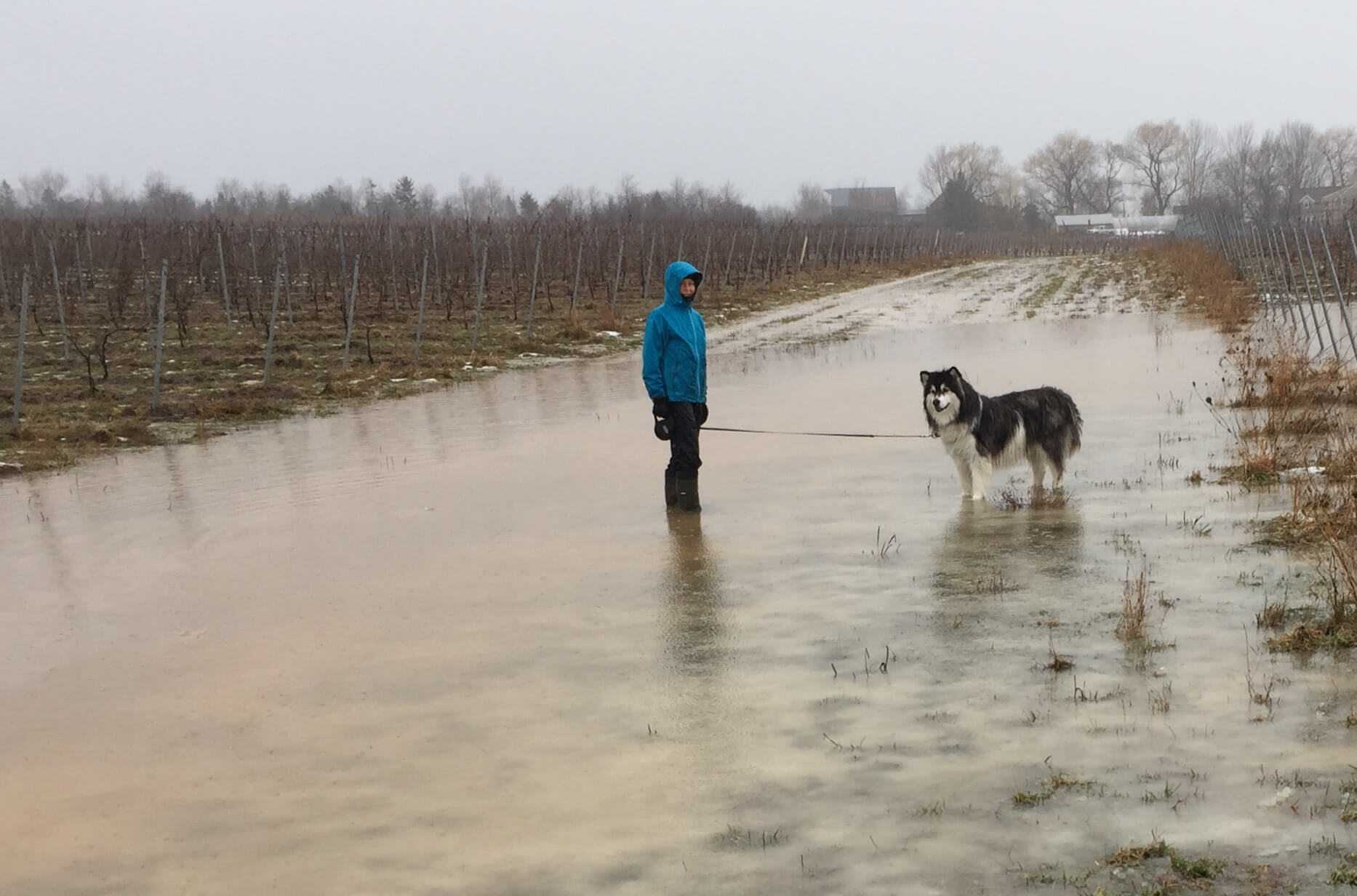
Water from snow melt or winter rains stands in low lying areas due to frozen ground that prevents quick absorption into the drain tile. It is a good idea to take pictures and use them in the spring to identify where to excavate drain tile and back fill with clean gravel to allow quicker drainage, and to reshape land contours for better surface runoff.
A review of the insurance programs covering the freeze of June 2018
There are 2 main insurance programs for vineyards. The Nova Scotia provincial one is called Nova Scotia Crop and Livestock Insurance (800-565-6371) and the federal one is called the AgriStability/AgriInvest program (866-367-8506). The AgriInvest program is a subcatagory which gives you for free 1% of your gross income if you open a special bank account and deposit a matching amount. Shortly after the federal deposit is made you can withdraw all the money with no fee or penalty. The idea is that this money gets you a start on paying bills while you await the Agristability payment, which comes much later, unless you are eligible for an accelerated payment. You must have a current tax return to apply. My experience is that you need an experienced accountant to apply for you. It was too complicated for me to figure out. Sheila Harris from Bishop & Co, in Wolfville (902-542-7665) did a great job. However, it was not cheap. Get an estimate before proceeding to be sure it fits your budget and that the estimated claim is worth the cost of applying. The Nova Scotia program deadline to apply is November 15, 2019 for the 2020 crop. It is very important to note that the date comes the year before the potential claim period. The cost depends on the percent of crop loss you elect to cover and whether the grapes lost are vinifera or hybrids. The Commission is under the direction of George MacIntosh who is easily contacted and is very helpful (902-893-6370 email george.macintosh@novascotia.ca). I’m told that there is value in having both provincial and federal insurance although no one has completely explained to me why. Any provincial assistance will be deducted from what you receive from the federal program. The provincial assistance comes before the federal, which I understand can be paid out many months after the loss. Finally for 2018, due to the severe spring freeze a very generous but temporary provincial insurance program called the Frost Loss Program was set up for grape losses in Nova Scotia. It required that the 2018 crop be averaged over 3 years of harvest and then divided by 50%. It was a free program and no previous insurance was required. That money will be available quickly and the program was simple to apply for. Any claim payment will be subtracted from the federal Agristability program. The deadline was March 15, 2019. Don’t expect this to be repeated any time soon. My take on insurance is that if you need income from your grapes to stay in business then you need at least one of these insurance programs. With climate change a reality, large swings in temperature in the spring will become more frequent . Early warm springs will be followed by more severe spring frosts.
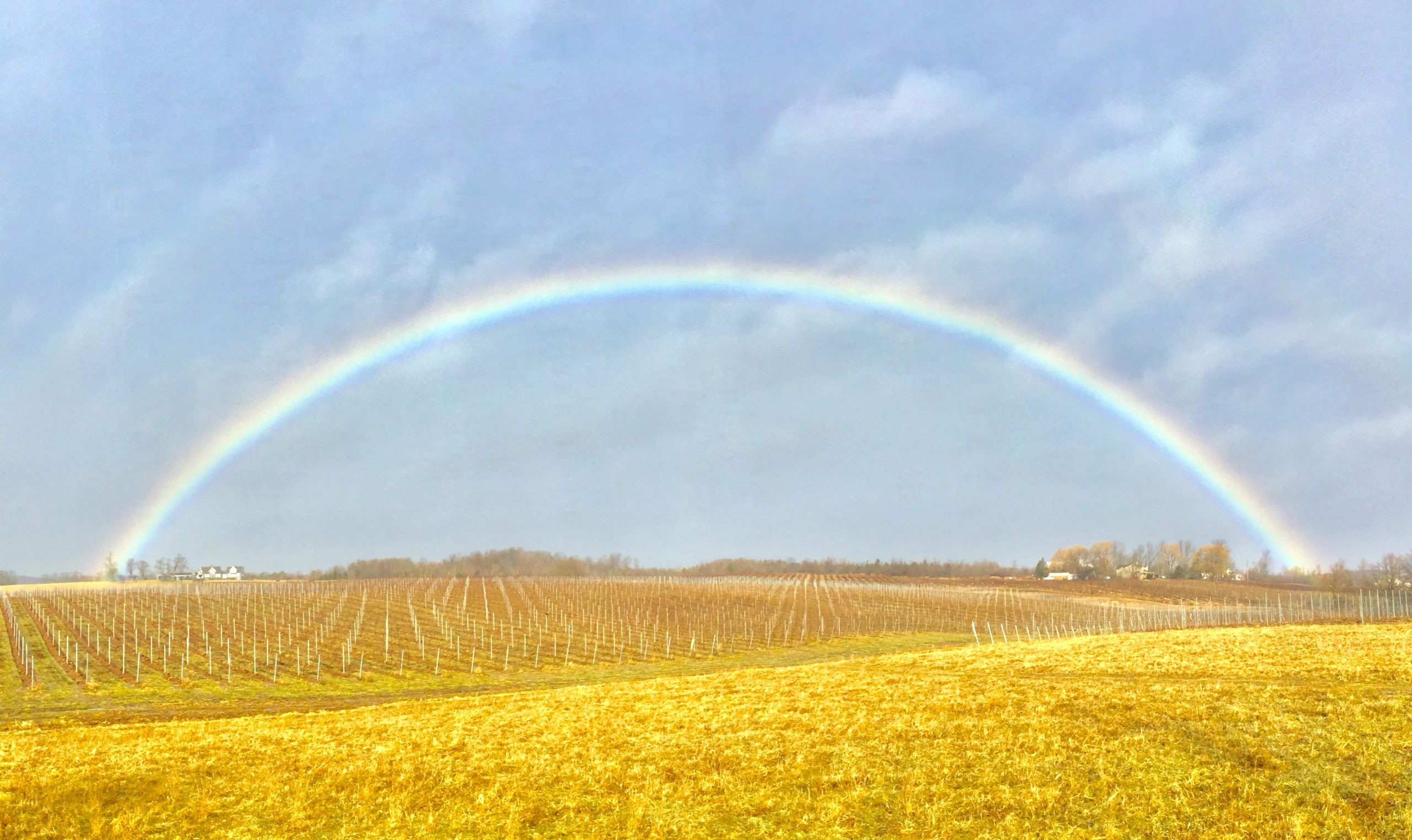
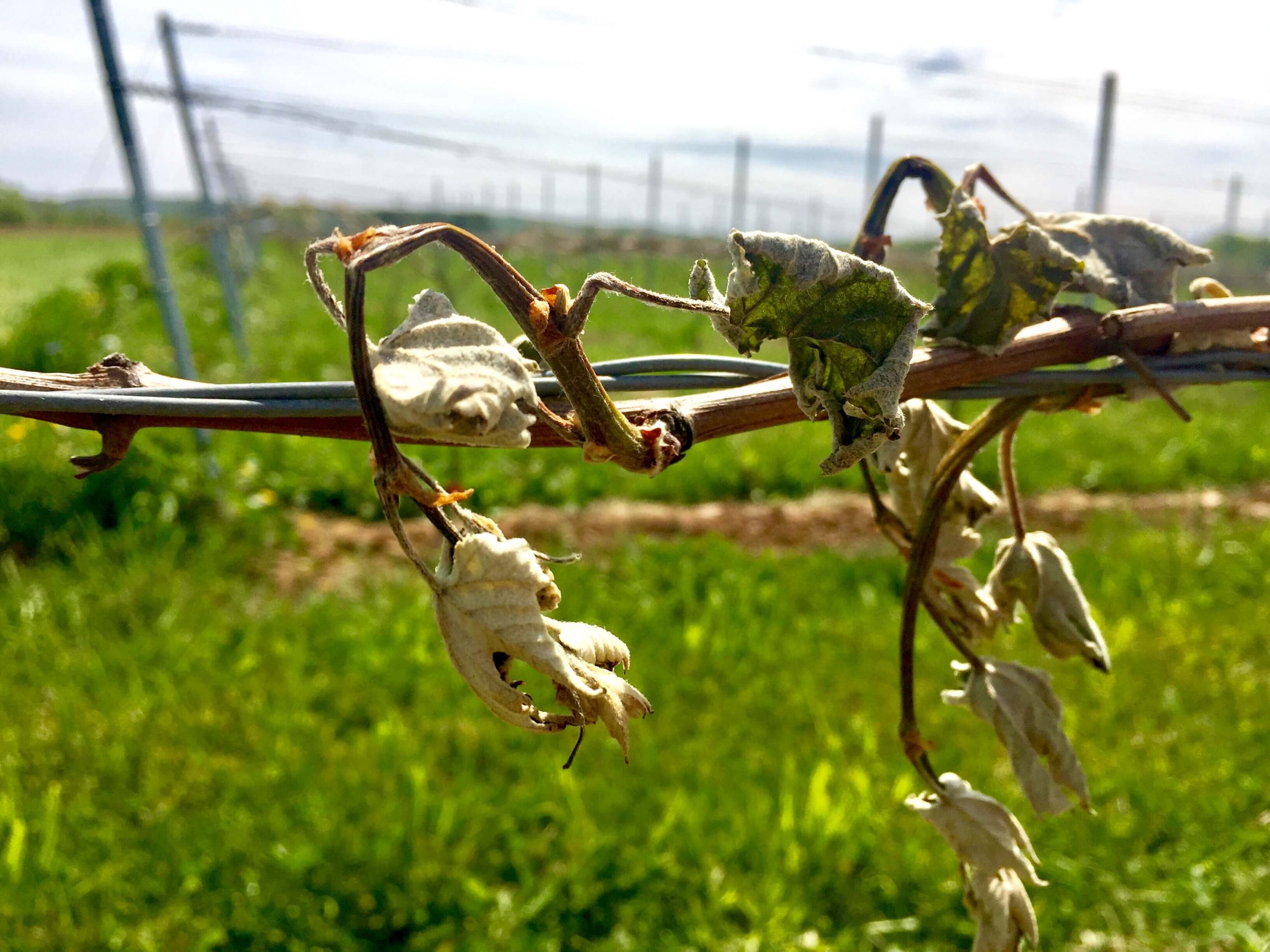
Thoughts on spring frost protection
The standard methods of avoiding frost damage have been summarized by Francisco Diez (fdiez@perennia.ca) (https://www.perennia.ca/portfolio-items/grapes/?portfolioCats=87). The most important recommendation is choosing the right location. Based on the June 2018 freeze, vineyards bordering the Minas Basin and on the south slope of the North Mountain were the least affected by the freeze, while vineyards on the floor of the Annapolis valley, Gaspereau Valley and the north slope of the South Mountain were the most affected. Pat Johnson, a consultant for Barlett Biological brought in by Scotian Gold (Scott Coleman) recommended spraying a mixture of Organomex and Stella Maris (Scotian Gold (902-679-6661) one liter/acre on the newly budded out leaves every 1-2 weeks, the theory being that these compounds act as free radical scavengers. KDL (potassium dextro lac) has been recommended as a spray 24 hours before the anticipated frost https://midwestwinepress.com/2013/03/17/kdl/. Another site that discusses frost prevention is https://midwestwinepress.com/tag/grape-frost-protection/.
Mechanical methods of frost protection include the use of wind turbines. Two are installed at Bishop Brook Estate Farm in Aylesford. They protect 10 acres each down to -3 degrees C. They did not protect against the June 4 freeze. Cost is about 50000$ installed on a concrete platform. Each has its own propane tank and use a significant amount of propane. The equipment and installers come from Ontario. A contact for the farm is Glen Antonuk (glen.antonuk@outlook.com). A second mechanical method is a cold air drain ( https://www.shurfarms.com/product-and-services) available from California. I hear it is being tested at Benjamin Bridges Winery in Gaspereau Valley. Each one covers 10 acres, can be used in hilly terrain and cost about 20000$ plus shipping and duty. It is run by its own motor or a tractor PTO (https://www.shurfarms.com/product-and-services).
